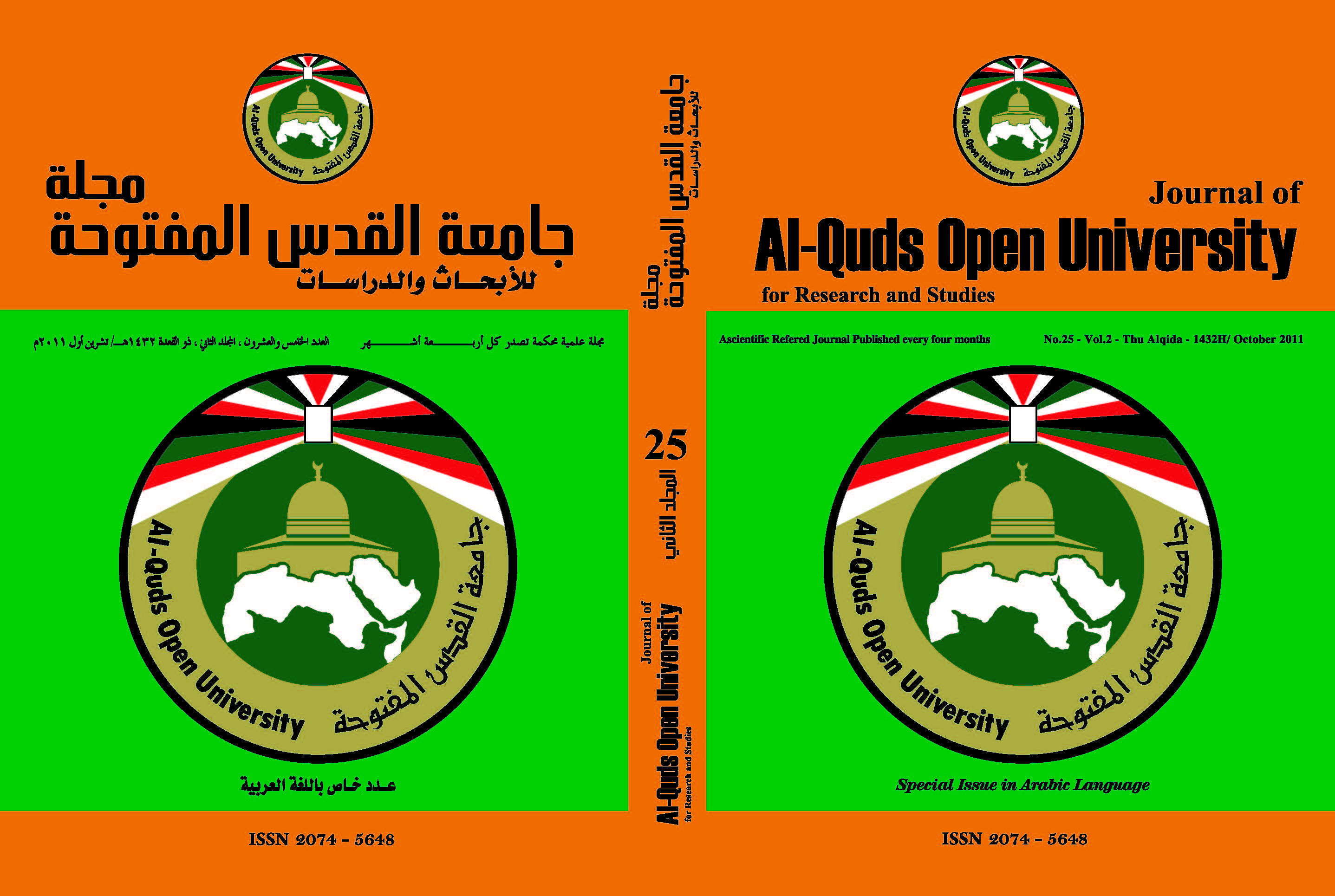Ellipses in Surat Hood in the Holy Quran
Keywords:
Ellipses, linguistics, Surat Hood, the Holy Quran, connotations, syntax,Abstract
This study addresses the linguistic feature of ellipses in surat Hood in the
holy Quran. It aims to verify the various figures of speech of this sura so that
its intentions, purposes and connotations could be disambiguated. Unlike
syntactic studies with its lifeless aspects, this study is obviously enriched
with smoothness, depth and originality. Apparently, such linguistic features
indicate that Arabic enjoys individuality in terms of its unique methods
expressed by broadness of connotation and strength of expression. The study
has been divided into two major topics: ellipses in accusative cases and
ellipses in nominative cases. This study has also employed the descriptive,
analytical and inductive methodology.
The study has spotted (77) cases of ellipses in surat Hood where (35)
have been classified for the nominative cases and (42) for accusative ones.
However, the elliptical feature in each case has semantically served a
connotative purpose. Evidently, this indicates that the holy Quran is the peak
of rhetoric and eloquence with implications that need further investigation
and research.
Finally, the study highly recommends that researchers pay greater
attention to the linguistic feature of ellipses in Arabic.
Downloads
Published
How to Cite
Issue
Section
License
- The editorial board confirms its commitment to the intellectual property rights
- Researchers also have to commit to the intellectual property rights.
- The research copyrights and publication are owned by the Journal once the researcher is notified about the approval of the paper. The scientific materials published or approved for publishing in the Journal should not be republished unless a written acknowledgment is obtained by the Deanship of Scientific Research.
- Research papers should not be published or republished unless a written acknowledgement is obtained from the Deanship of Scientific Research.
- The researcher has the right to accredit the research to himself, and to place his name on all the copies, editions and volumes published.
- The author has the right to request the accreditation of the published papers to himself.













_2.png)
_.png)
_2.png)
_1.png)
_.png)

